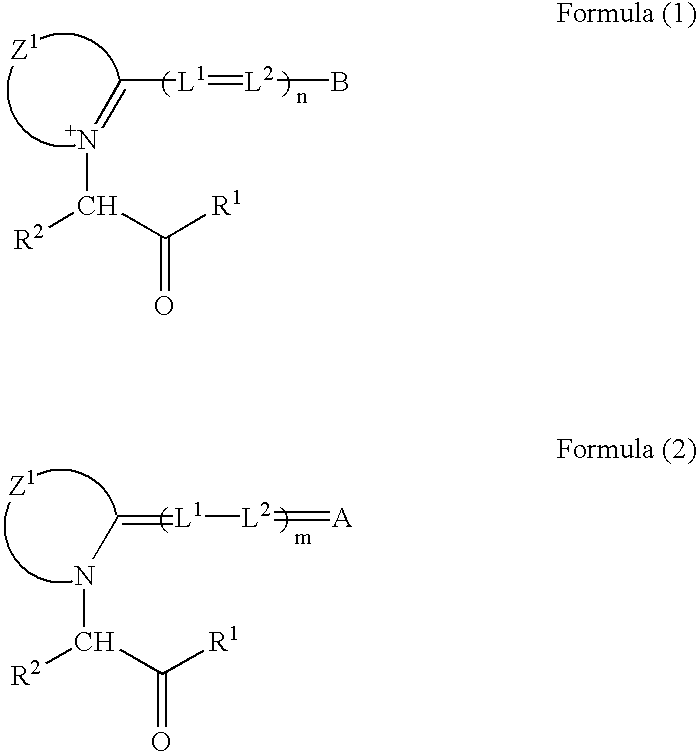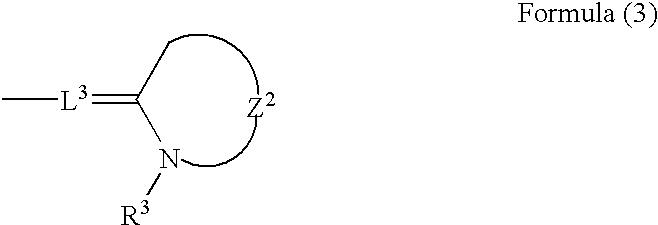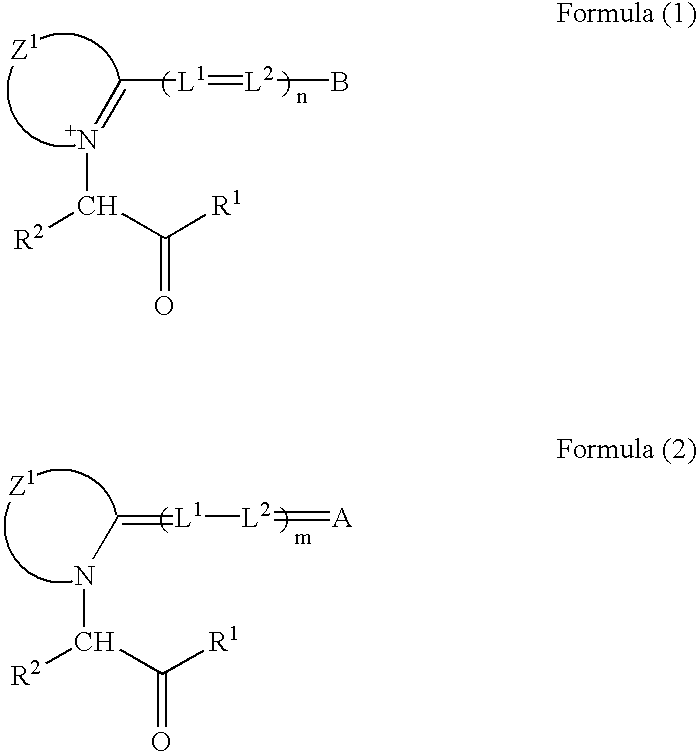Photothermographic material and image formation method utilizing the same
a technology of photothermographic material and image formation method, which is applied in the direction of optics, instruments, photosensitive materials, etc., can solve the problems of image storability after development, image storability suffers from unsolved problems, and the degradation of printouts by light irradiation, etc., and achieves the effect of reducing the number of irradiation
- Summary
- Abstract
- Description
- Claims
- Application Information
AI Technical Summary
Benefits of technology
Problems solved by technology
Method used
Image
Examples
example 1
Preparation Example of PET Support
PET having IV (intrinsic viscosity) of 0.66 (measured in phenol / tetrachloroethane=6 / 4 (weight ratio) at 25.degree. C.) was obtained by using terephthalic acid and ethylene glycol in a conventional manner. The product was pelletized, dried at 130.degree. C. for 4 hours, then melted at 300.degree. C., added with 0.04 weight % of Dye BB having the structure mentioned below, then extruded from a T-die and rapidly cooled to form an unstretched film having such a thickness that the film should have a thickness of 175 .mu.m after thermal fixation. ##STR108##
This film was stretched along the longitudinal direction by 3.3 times using rollers of different peripheral speeds, and then stretched along the transverse direction by 4.5 times using a tenter. The temperatures of these operations were 110.degree. C. and 130.degree. C., respectively. Then, the film was subjected to thermal fixation at 240.degree. C. for 20 seconds, and relaxed by 4% along the transvers...
example 2
Silver halide emulsions 2, 3 and 4 each having a uniform silver halide composition shown in Table 1 were prepared in the same manner as in Example 1 by changing the halogen composition of the added emulsion. Grain size of the silver halide grains was controlled to be 0.040 .mu.m as a diameter of projected area as circle by changing the temperature during the grain formation. Addition amounts of Silver halide emulsions 1 to 4 and the antihalation dye in BC layer were changed so as to obtain optical densities mentioned in Table 1 to prepare Photothermographic materials 2 to 11.
Photothermographic materials 1 to 11 obtained in Examples 1 and 2 were evaluated as follows.
Light Exposure of Photothermographic Material
Each of the photothermographic materials was exposed as follows.
A semiconductor laser NLHV 3000E produced by Nichia Corporation was mounted on the light exposure section of Fuji Medical Dry Imager FM-DPL produced by Fuji Photo Film Co., Ltd., and the beam diameter was narrowed ...
example 3
Photothermographic material 12 was produced in the same manner as in Example 1 except that the yellow dye according to the present invention was also added to the coating solution for photosensitive layer. Photothermographic materials 12 to 14 were prepared in the same manner by changing coating amounts of the dye and silver iodide content in the silver halide. The photothermographic materials were evaluated in the same manner as described above, and the results are shown in Table 2.
Further, sensitivity was measured as follows.
Sensitivity
Density of the obtained image was measured by using a densitometer and plotted against logarithm of light exposure to prepare a characteristic curve. Optical density of unexposed area was considered fog, and sensitivity was represented with reciprocal of light exposure giving an optical density of 3.0. The results of sensitivity were represented with relative values based on the sensitivity of Photothermographic material 2, which was taken as 100.
As...
PUM
| Property | Measurement | Unit |
|---|---|---|
| wavelength range | aaaaa | aaaaa |
| wavelength range | aaaaa | aaaaa |
| wavelength range | aaaaa | aaaaa |
Abstract
Description
Claims
Application Information
 Login to View More
Login to View More - R&D
- Intellectual Property
- Life Sciences
- Materials
- Tech Scout
- Unparalleled Data Quality
- Higher Quality Content
- 60% Fewer Hallucinations
Browse by: Latest US Patents, China's latest patents, Technical Efficacy Thesaurus, Application Domain, Technology Topic, Popular Technical Reports.
© 2025 PatSnap. All rights reserved.Legal|Privacy policy|Modern Slavery Act Transparency Statement|Sitemap|About US| Contact US: help@patsnap.com



